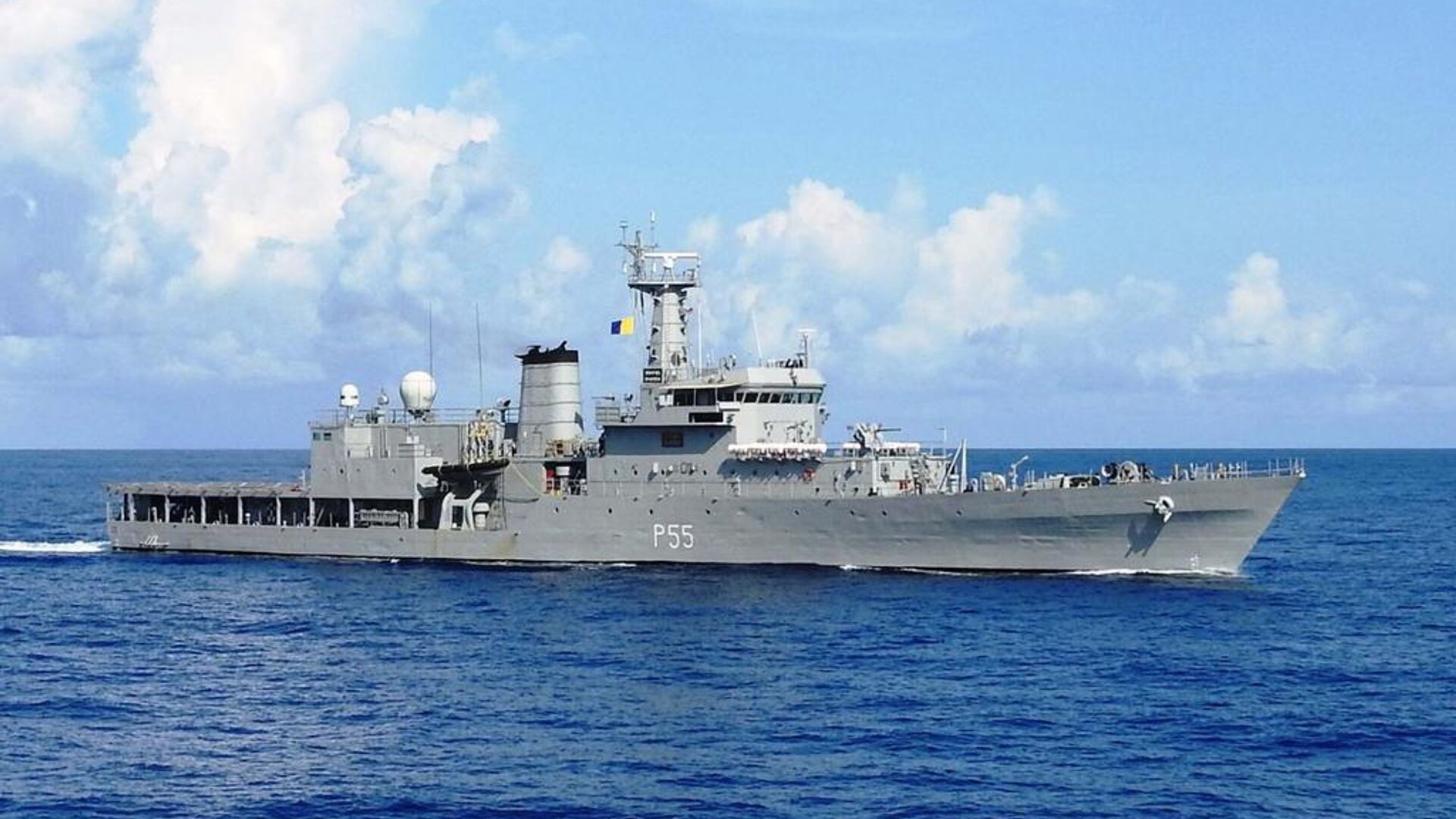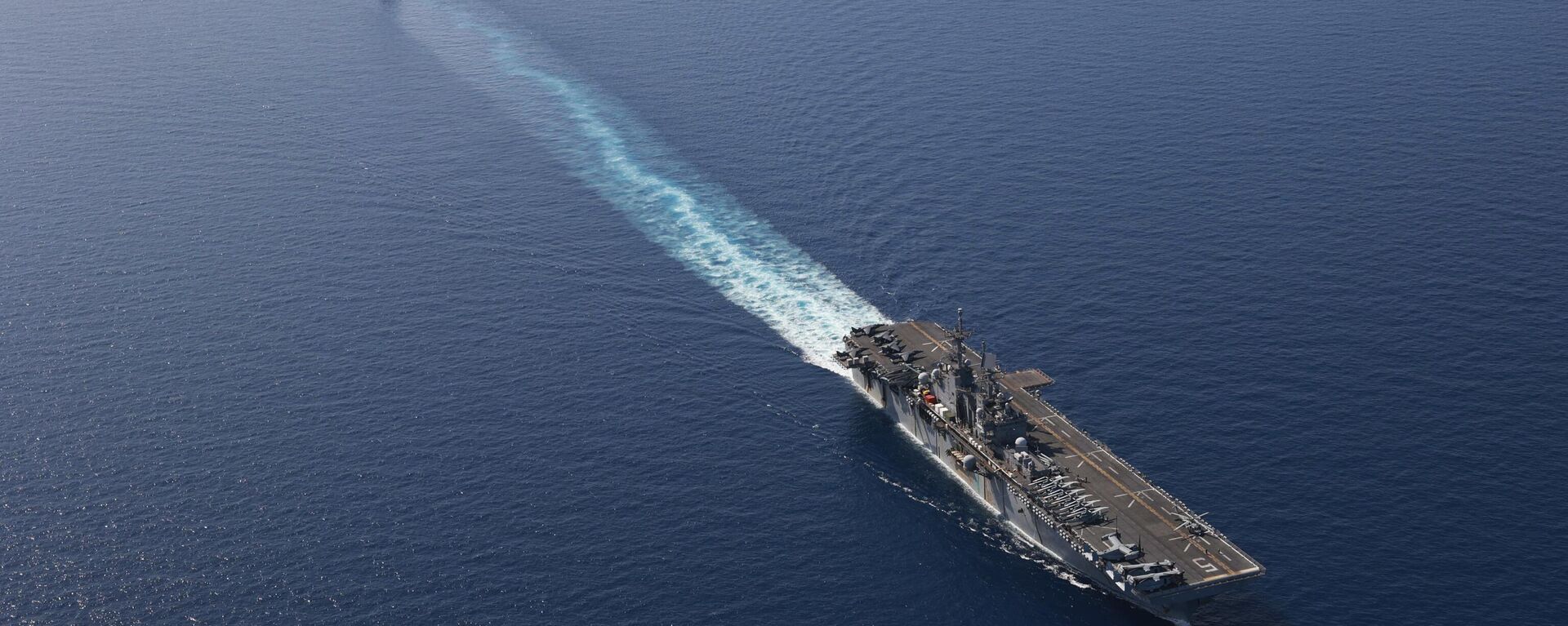https://sputniknews.in/20240130/why-indian-navy-is-increasing-its-interoperability-with-west-asia-6390480.html
Why Indian Navy is Increasing Its 'Interoperability' With West Asia
Why Indian Navy is Increasing Its 'Interoperability' With West Asia
Sputnik India
West Asia has become a focal point of global geopolitics in the last four months with the advent of the Israel-Hamas war in Gaza and the subsequent clashes between Yemen's Houthis and the US-led alliance in the Red Sea.
2024-01-30T20:19+0530
2024-01-30T20:19+0530
2024-01-30T20:46+0530
middle east
saudi arabia
yemen
indian navy
houthis
red sea
military equipment
military spending
military cooperation
military build-up
https://cdn1.img.sputniknews.in/img/07e8/01/1e/6391151_0:93:1024:669_1920x0_80_0_0_f5480fd816e4e386dcc3a6b6f52c0c9e.jpg
The fast-changing landscape in the Middle East has sent alarm bells ringing in New Delhi with India's energy security under threat from the spillover of tensions between a Western grouping spearheaded by the United States and Yemen's Houthis supported by regional heavyweight Iran.It is worth noting that in the last 48 hours, there have been three separate incidents in the Indian Ocean Region (IOR), in which Indian naval ships have intervened to protect merchant ships from pirates.In the first case, it was the Iranian sailors, in the second, it was the Pakistanis and in the third, the world's largest democratic sovereign state's maritime forces rescued the Sri Lankans.India's Maritime Forces Confident About Dealing With Challenges in IORAgainst this backdrop, Indian Navy veteran Commodore Seshadri Vasan (Retd) stressed that this is the kind of confidence the Indian Navy has demonstrated in dealing with the challenges in the Arabian Sea.He added that the developments in the Middle East were of great concern for India.Therefore it was only natural that the Indian Navy, which is a major stakeholder in the IOR, overseeing the sea lanes of communication, and looking at shipping safety and energy security, has an important role to play in the area.New Delhi Increases Outreach to Countries in the MENA RegionIncidentally, TANSEEQ - a joint military exercise featuring the armed forces of India and Saudi Arabia began in Rajasthan on Monday.Indian Navy's Mission-Based Deployment a Game-ChangerThe military expert revealed that the Indian Navy launched mission-based deployment about seven years ago.Vasan pointed out that according to this plan, the Indian naval ships would not be in ports, rather they would be deployed in various places where there's action taking place - it could be the Red Sea, the Strait of Hormuz, or the Malacca Straits.The defense analyst expressed this kind of mission-based deployment enabled the Indian Navy to shore up its game. It was already the first responder, with the entire region acknowledging that as of today, the South Asian nation's blue water force was the first responder.
https://sputniknews.in/20240118/how-middle-east-conflagration-impacts-indias-military--economy-6246086.html
middle east
saudi arabia
yemen
red sea
Sputnik India
feedback.hindi@sputniknews.com
+74956456601
MIA „Rossiya Segodnya“
2024
Pawan Atri
https://cdn1.img.sputniknews.in/img/07e6/0c/13/139630_147:0:831:684_100x100_80_0_0_8fa2b25903e7787fe6a2698552c167df.png
Pawan Atri
https://cdn1.img.sputniknews.in/img/07e6/0c/13/139630_147:0:831:684_100x100_80_0_0_8fa2b25903e7787fe6a2698552c167df.png
News
en_IN
Sputnik India
feedback.hindi@sputniknews.com
+74956456601
MIA „Rossiya Segodnya“
Sputnik India
feedback.hindi@sputniknews.com
+74956456601
MIA „Rossiya Segodnya“
Pawan Atri
https://cdn1.img.sputniknews.in/img/07e6/0c/13/139630_147:0:831:684_100x100_80_0_0_8fa2b25903e7787fe6a2698552c167df.png
indian navy middle east interoperability, indian navy exercises middle east, indian navy saudi arabia, middle crisis india, how middle east tensions are impacting india, middle east crisis implications for india, iran missile strikes in pakistan, iran missile strikes balochistan, pakistan condemns iranian attack, pakistan foreign ministry iran attacks, pakistan expels iranian ambassador, pakistan recalls envoy from tehran, iran carries out missile strikes in pakistan, iran missile strikes in balochistan, iran missile strikes iraq, iran missile strikes syria, iran missile strikes kurdistan, iran mossad headquarters erbil, iran airstrikes iraq, houthi attacks red sea china, houthi attacks xi jinping, houthi attacks red sea jinping, yemen, us-led coalition, houthis, red sea, israel-hamas war, conflict in middle east, us strikes in yemen, us strikes iran, us strikes iraq, us strikes syria, yemen news, houthi rebels, houthi news, houthi attacks, houthi red sea attacks, houthi news today, gaza news, gaza death toll, gaza strip, oil prices, red sea attacks, houthi attacks china, houthi attacks chinese foreign ministry,
indian navy middle east interoperability, indian navy exercises middle east, indian navy saudi arabia, middle crisis india, how middle east tensions are impacting india, middle east crisis implications for india, iran missile strikes in pakistan, iran missile strikes balochistan, pakistan condemns iranian attack, pakistan foreign ministry iran attacks, pakistan expels iranian ambassador, pakistan recalls envoy from tehran, iran carries out missile strikes in pakistan, iran missile strikes in balochistan, iran missile strikes iraq, iran missile strikes syria, iran missile strikes kurdistan, iran mossad headquarters erbil, iran airstrikes iraq, houthi attacks red sea china, houthi attacks xi jinping, houthi attacks red sea jinping, yemen, us-led coalition, houthis, red sea, israel-hamas war, conflict in middle east, us strikes in yemen, us strikes iran, us strikes iraq, us strikes syria, yemen news, houthi rebels, houthi news, houthi attacks, houthi red sea attacks, houthi news today, gaza news, gaza death toll, gaza strip, oil prices, red sea attacks, houthi attacks china, houthi attacks chinese foreign ministry,
Why Indian Navy is Increasing Its 'Interoperability' With West Asia
20:19 30.01.2024 (Updated: 20:46 30.01.2024) West Asia has become a focal point of global geopolitics in the last four months with the advent of the Israel-Hamas war in Gaza and the subsequent clashes between Yemen's Houthis and the US-led alliance in the Red Sea.
The fast-changing landscape in the Middle East has sent alarm bells ringing in New Delhi with India's energy security under threat from the spillover of tensions between a Western grouping spearheaded by the United States and Yemen's Houthis supported by regional heavyweight Iran.
It is worth noting that in the last 48 hours, there have been
three separate incidents in the
Indian Ocean Region (IOR), in which Indian naval ships have intervened to
protect merchant ships from pirates.
In the first case, it was the Iranian sailors, in the second, it was the Pakistanis and in the third, the world's largest democratic sovereign state's maritime forces rescued the Sri Lankans.
India's Maritime Forces Confident About Dealing With Challenges in IOR
Against this backdrop,
Indian Navy veteran Commodore Seshadri Vasan (Retd) stressed that this is the kind of confidence the Indian Navy has demonstrated in dealing with the challenges in
the Arabian Sea.
He added that the developments in the Middle East were of great concern for India.
Therefore it was only natural that the Indian Navy, which is a major stakeholder in the IOR, overseeing the sea lanes of communication, and looking at shipping safety and energy security, has an important role to play in the area.
"That is why the Indian Navy is trying to engage with all the regional navies - from Saudi Arabia to UAE to Oman. This augurs well for multilateral engagement and at the same time allows the Indian Navy to protect its interests by engaging with other maritime forces," Vasan, who currently serves as the Director General of Chennai Centre for Chinese Studies (C3S) told Sputnik India on Tuesday.
New Delhi Increases Outreach to Countries in the MENA Region
Incidentally,
TANSEEQ - a joint military exercise featuring the armed forces of India and Saudi Arabia began in
Rajasthan on Monday.
"So this is the kind of engagement that would hold India in good stead. Because all these countries will have a chance to look at the Indian military's capacity and capability, particularly the confidence the Indian Navy has demonstrated in its resolve to contain piracy activities in ocean waters," Vasan underlined.
Indian Navy's Mission-Based Deployment a Game-Changer
The military expert revealed that the Indian Navy launched mission-based deployment about seven years ago.
Vasan pointed out that according to this plan, the Indian naval ships would not be in ports, rather they would be deployed in various places where
there's action taking place - it could be the Red Sea,
the Strait of Hormuz, or the Malacca Straits.
The defense analyst expressed this kind of mission-based deployment enabled the Indian Navy to shore up its game. It was already the first responder, with the entire region acknowledging that as of today, the South Asian nation's blue water force was the first responder.
"In essence, the Indian Navy's interoperability with West Asian navies showcased India's use of its armed forces for furthering its strategic objective," Vasan concluded.



